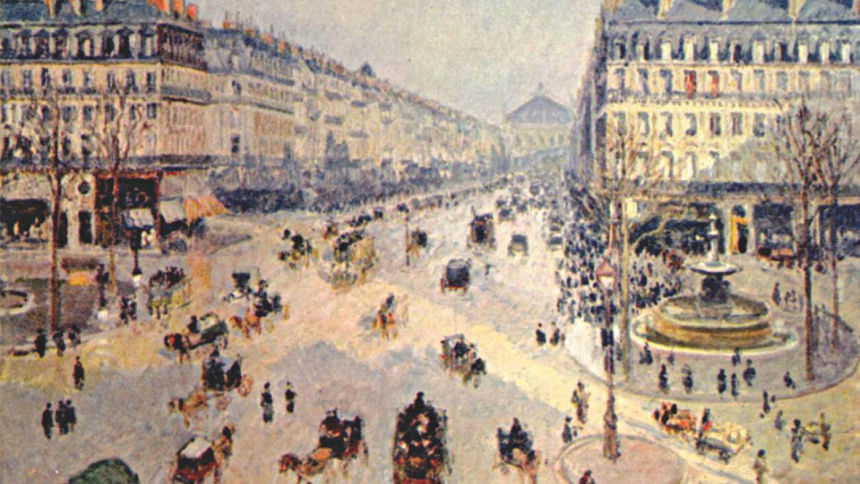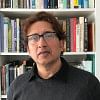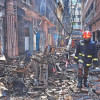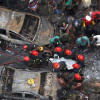Dhaka's urban politics, Haussmann, and related thoughts

After the tragic Chawkbazar inferno in Old Dhaka, I have been thinking about what it would take to bring some urban sanity to a complex megacity like Dhaka. I find myself constantly thinking of Baron Georges-Eugène Haussmann, not because of his controversial "remaking" of 19th-century Paris, but because of how relevant the divisive debate that began in the wake of his remaking of the French capital could be for Dhaka's current urban scenario. At the centre of the debate was whether Haussmann was a benevolent master planner or an imperialist megalomaniac in fixing Paris.
Who was Haussmann? In 1852, he was an ambitious civil servant who found a great opportunity to participate in the grand redevelopment plan that Emperor Napoleon III had envisioned for Paris. The new emperor hated Paris and its deplorable urban conditions. In 1846, the French capital had crossed the milestone of being a city with a million people. The city was a mess, overcrowded, congested, and polluted. The city's narrow and winding streets were inaccessible and dingy, lacking sunlight and ventilation. Regular outbreak of cholera and typhoid took the lives of tens of thousands. The dismal environment in which the working class lived created conditions ripe for social anarchy and breakdown.
The emperor wondered what it would take to transform Paris into a liveable city, marked by urban parks, tree-lined avenues, and a modern sewage system. He needed somebody to execute his vision. In June 1853, at the recommendation of the then French interior minister, Haussmann was installed at the summit of the French prefectorial hierarchy to oversee Napoleon III's ambitious plan for Paris.
What happened next was the most expensive and extensive public works ever carried out in a European city. For 17 years, the French capital was a massive building site. The cost of rebuilding was a staggering 75bn Euro by today's estimate. Capitalising on his intimate relationship with the emperor, Haussmann moved swiftly to carry out his plan. He cut boulevards through the congested centre of Paris, demolishing slums, knocking down about 27,500 buildings, and creating spaces for monuments, parks, and such landmarks as Palais Garnier and Les Halles marketplace. He oversaw the creation 71 miles of new roads and the city's modern sewage network, among other infrastructures. He adorned city streets with lampposts, newspaper kiosks, benches, trees, and broad sidewalks. It was a new, rejuvenated Paris.
Many modern observers suggest that Haussmann had transformed Paris singlehandedly, laying the foundation for modern Paris, the City of Lights that cultural critic and philosopher Walter Benjamin famously called "the capital of the nineteenth century". Yet, many 19th-century Parisians also complained that Haussmann destroyed the historic core of Paris, with some portraying him as an arrogant figure, who would do anything to get what he wanted. Some even suggested that the real reason for creating wide boulevards was to enable the army to mobilise swiftly and quell the revolt of the agitating working-class masses. Haussmann's republican opponents thought he was merely facilitating the imperial control of the city, mired in political chaos. They also criticised his maniacal frenzy with which he executed his plan, suppressing all dissent.
Even Victor Hugo hated him. The author of Les Miserables (written in 1862, during Haussmann's rebuilding of Paris), who bemoaned the wretched conditions of working-class Parisians, accused Haussmann rather for destroying the medieval charm of 19th-century Paris! The political backlash against Haussmann was damning. Eventually, he was ousted from his position and became a persona non grata in the city he sought to rebuild.
The irony of the story is that in many ways the Paris that we all romanticise became Paris as a result of Haussmann's demolishing and rebuilding. Was Haussmann autocratic? Did he embody the ethos of repressive top-down planning? Was he a necessary messiah to reclaim a city where frequent cholera epidemics killed scores of people? What was more important: his method of getting it done or the end product of his intervention? Many people, including Queen Victoria, visiting Paris following Haussmann's rebuilding, thought he was a master planner of pure genius.
Haussmann's story raises relevant questions for the urban governance of megapolises like Dhaka. Let me pose the question again: what would it take to make Dhaka a liveable, safe city, where fire, out of the blue, wouldn't kill hundreds of people. In the wake of the Chawkbazar fire, urban planners predictably suggested doing land-use planning, as if some drawings on the table would compel small business-owners to give up their clandestine ways of storing flammable chemicals in residential areas. Unfortunately, accidents will happen, but the challenge is to plan land-use and be fully prepared to minimise damage when accidents strike.
Planning plays a very important role in developing resilient cities. But who plans? How does he/she plan? What is the methodology? How do city administrators execute an urban plan for a city? In recent times we have become accustomed to hearing about "participatory" planning, a democratic way of engaging all stakeholders, so that the final product would be acceptable to all.
Yes, participatory planning is the right way and we need to believe in its power to create people-centric cities. But we should also not shy away from asking context-specific, and at times inconvenient, questions about its ability to work when the idea of greater good is not a widely shared and understood societal goal. The Greeks called it eunomia or good order—a basic social contract that all citizens believed in for society to function, despite the messiness of democracy's dissenting voices.
Would business owners in Old Dhaka heed any moralist appeal to relocate their dangerous but profit-making chemicals to designated, safe storage places? Could environmental laws and their strict implementation solve the problem of fire hazards in dangerously populated areas? How about social campaigns to inspire the public to be conscious of the greater good? Would democratic governance work when the public trust in the greater good is weak? These questions should be solemn reminders of how urban planning is intertwined with a complex web of anthropological and political challenges.
This discussion should also raise an uncomfortable question about democracy for democracy's sake. While we can't underestimate the significance of democratic values and norms, we should also be mindful that democracy is not an end in itself. Democracy is for the people or demos, not the other way around. Democracy can't exist for itself. While they are not mutually exclusive, democracy is only a means to human wellbeing.
Francis Fukuyama's 1992 prophecy that western liberal democracy was the apex of humanity's socio-cultural evolution—the "end of history" hypothesis—proved to be premature. Democracy has its discontents. We should not be afraid to acknowledge that sometimes the greater good could be too elusive or not readily understood by us within the framework of conventional democratic practices. Sometimes we could be too concerned with the immediate problems in our daily lives, while unwittingly remaining unaware of the possibility of the greater good in the long run. But whose idea of the greater good should we, the people, subscribe to?
Haussmann's "creation" of modern Paris doesn't answer this question. Yet, it offers us a fertile field to debate how we can move forward to create liveable, safe, and resilient cities. In such cities, business-owners won't store flammable chemicals in packed residential buildings because there are no secret spaces available to them anymore to hide their hazardous stuff after the strict enforcement of urban land-use reforms. More important, they will not do so because it is not the right thing to do. The achievement of the greater good is a battle on many fronts.
Adnan Zillur Morshed, PhD, is an architect, architectural historian, urbanist, and columnist. He teaches at the Catholic University of America in Washington, DC, and serves as Executive Director of the Centre for Inclusive Architecture and Urbanism at BRAC University. He can be reached at [email protected].

 For all latest news, follow The Daily Star's Google News channel.
For all latest news, follow The Daily Star's Google News channel. 








Comments